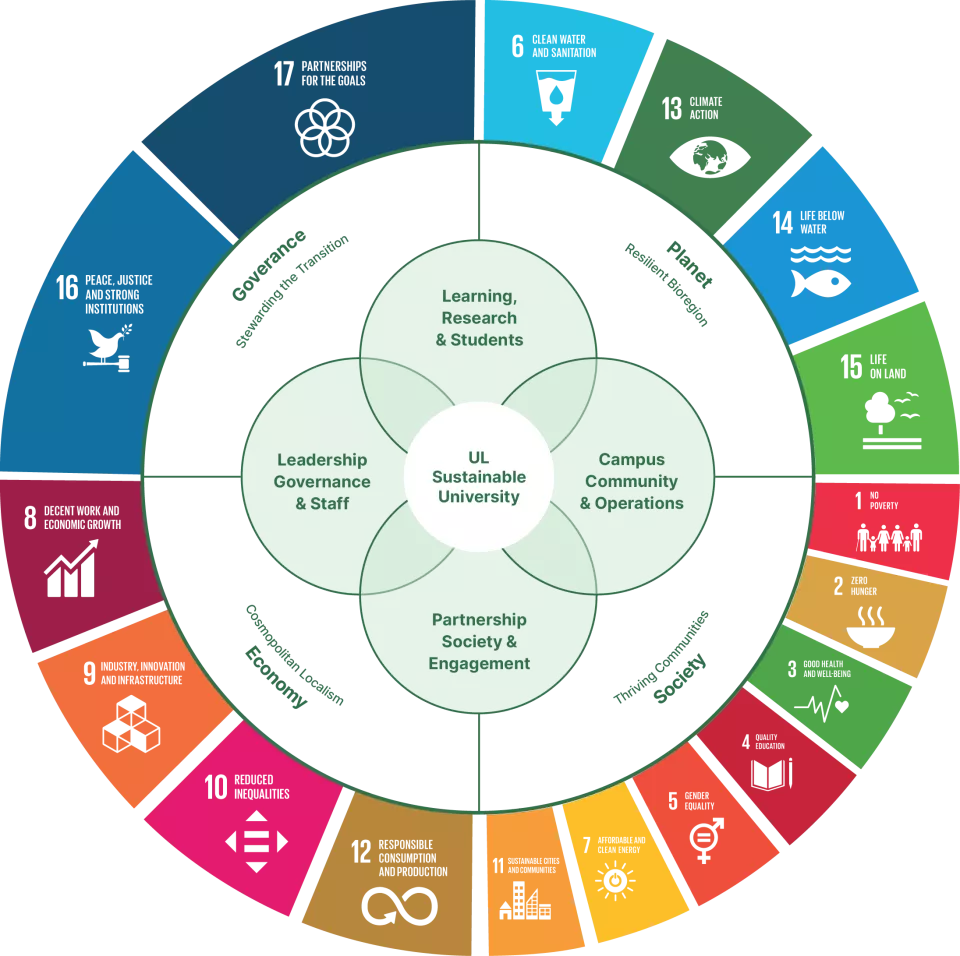It is our responsibility as a HEI to contribute to the transition toward a sustainable society and become a ‘Sustainable University’.
To become a Sustainable University, we must start by acknowledging that true sustainability will require permanent adaptive responsiveness to on-going change.
The prerequisite of adaptability and responsiveness is embodiment. It ensures ideas and intentions are rooted in action. Consequently, embodiment can be seen as the central characteristic of a Sustainable University; a title for institutions that go beyond traditional curricula and research programmes, and actively explore change within their own ethos, practices and operations.
A sustainable world is not a foregone conclusion – our actions today will determine the future we manifest. The gravity of this responsibility necessitates that we do not drift along with the tides of change. Instead, we are called to intentionally open our mind, heart, and hands to the possibilities that can only be revealed by moving bravely into the unknown. If we become trapped by dogma and incremental innovation, we will find ourselves sustaining a world characterised by the faults of the present.
The success of our collective transition will largely depend on the degree to which HEIs claim a role in advancing the critical gaps in our knowledge and nurturing the vital shifts in our culture. To fully leverage the potential for change that HEIs hold, this role must play out across all aspects of our institutions: from boardrooms, to lecture halls, and campus grounds alike.
As a result, UL recognises that success is to be found in the union between the thoughtful reimagination of both the tangible aspects (e.g. educational spaces) and intangible aspects (e.g. governance models) of our institution.
To do so requires a whole university approach, underpinned by a model that takes the main areas of the modern university into account. These areas provide platforms for experimentation – and ultimately transformation – in service of the journey toward becoming a Sustainable University.

Diagram reference inspired by UNEP - UN Environment Programme (2022).